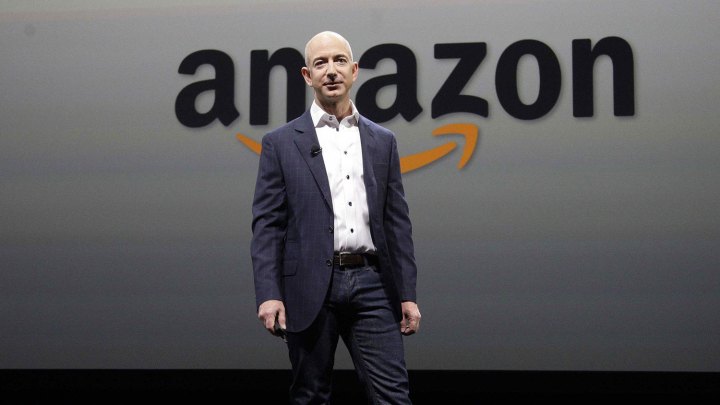
The success of Amazon’s onetime drags, Web Services and hardware, managed to drive the company past Wall Street’s loftiest expectations this past fiscal quarter.
Amazon Web Services (AWS), the retail giant’s collection of subscription Internet services, has more than a million active individual users. It counts Spotify, Netflix, and Reddit among its top clients. And it holds a collective 1.6 times as much data as the other top seven other cloud providers — heavyweights like Google, Microsoft, Alibaba, Rackspace, IBM, and others — combined. So it’s not entirely surprising that AWS now accounts for 56 percent of the company’s entire operating income.
And even more amazingly, it’s growing. During Amazon’s second fiscal quarter alone, AWS revenue climbed 58 percent, from $1.8 billion in the previous year to a massive $2.9 billion.
AWS has come a long way since 2006, when it began as a slapdash effort meant to divvy up Amazon’s spare network resources among parties willing to pay. The service then, much as it does now, collated processors, storage, and networking from machines around the world into “instances,” or individual slices of resources. You can buy exclusive use of a processor for a certain number of hours, for example, or a virtual storage locker of any size.
It was a prescient gamble. Companies — and startups, especially — are increasingly seeing the appeal in farming out hosting responsibilities to a third party. Ease of use is the major motivator. Eric Knorr, editor in chief of InfoWorld, explained it succinctly: “Anyone can upload virtual machines, store data, and run compute jobs in the cloud just by filling in a few web forms.”
Amazon’s hosting business isn’t the only unlikely bet that’s beginning paying off. In terms of hardware, Fire tablets and e-readers remain the company’s bread and butter. Market research firm IDC estimates shipments of Fire tablets rose 175 percent to 5.2 million units last holiday season. Its Echo speakers have also managed to sustain an impressive degree of momentum. New estimates put shipments of the Echo, Echo Dot, and Echo Tap at a collective 3 million as of April, making them far and away the most successful home voice assistants ever.
Amazon is doubling down on the Echo’s technology. It’s dedicated a team of more than 1,000 to the Echo’s software. It’s proactively encouraged, in some cases monetarily, the deployment of “skills,” or apps, for Alexa, the virtual assistant that powers the Echo. Alexa now boasts more than 1,900, including Lyft, Kayak, SmartThings, Philips Hue, Domino’s and others. And rumor has it that the company is working on a new device, code-named “Knight,” that will have a touchscreen.
For the second quarter of 2016, the company recorded revenue of $30.4 billion — far beyond forecasts of $29.55 billion and up 31 percent from the $23.19 billion it recorded in the same period a year earlier. It’s the fifth quarter in a row that Amazon has posted a profit, and the third it has beaten earnings records.
Amazon’s legacy divisions helped drive some of that revenue, of course. Its retail business generated $17.67 billion in revenue in the second quarter, a 28 percent upswing from last year’s take, thanks to Amazon’s second annual Prime Day event. Orders rose more than 60 percent compared to last year’s inaugural sales holiday. And subscriptions to Prime, Amazon’s $99 a year subscription service that grants benefits like free two-day and discounted one-day shipping, food and grocery delivery, and free monthly ebooks, boosted the bottom line, too. Prime members, who now number an estimated 54 million in the United States, spent significantly more than non-Prime members in the past year — about $1,100 versus $600 for nonmembers, according to Consumer Intelligence Research Partners (CIRP).
Amazon’s plans for the immediate future involve growing out those core businesses. Now that the company’s hardware and cloud divisions have become essentially self-sustaining, Amazon’s seemingly intent on getting its retail division to the same point. It intends to break ground on 18 new fulfillment centers in the third quarter of this year, or three times the number it opened in the same period a year ago. It’s pledged to “double” its investment in its on-demand video service, Amazon Instant, in the second half of this year in order to “triple” the number of original movies and television shows it produces. And it’s leased as many as 40 Boeing aircraft in preparation for the launch of an in-house shipping service that could eventually rival the scale of incumbents like Fedex and UPS.
Given the low overhead of its cloud and hardware divisions — its web hosting services don’t exactly require warehouses millions of square feet in length, or the hundreds of personnel required to staff them — Amazon’s ambitions sound like a bit of a stretch. Its physical goods division, profitable as it is, seems unlikely to match its Web-hosting revenue anytime soon. But given the regularity with which Amazon proves pundits wrong, it may yet pull a rabbit from its retail hat.


